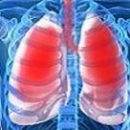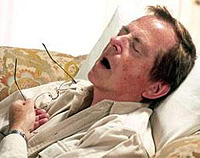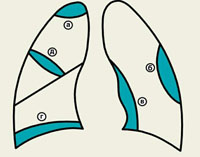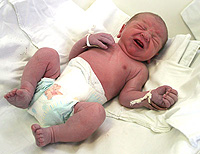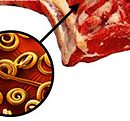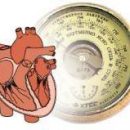What is chronic lung abscess? What are the symptoms of chronic lung abscess? Answers to these questions you will find in the article.
Content
Chronic shape of the lung abscess
Abscess light acute - limited cavity resulting from purulent melting of lung fabric. The pathogen is various microorganisms (most often golden staphylococcus). It is characterized by a decrease in the common and local protective functions of the body due to hitting into light and bronchi of foreign bodies, mucus, vomit - with alcoholic intoxication, after a convulsive seal or unconscious. Claimed chronic diseases and infections (diabetes mellitus, blood disease), violation of the drainage function of the bronchi, long-term intake of glucocorticoids, cytostatics and immunosuppressants.
Easy chronic abscess - this is a long-term extension process, which is the outcome of acute abscess. If the abscess of the lung is not completed within 2 months, it goes into a chronic stage.
The reasons for the transition of acute abscess into chronic can be divided into two groups:
Conditioned by the peculiarities of the pathological process:
- very large, with a diameter of more than 6 cm, cavities in lung
- The presence of sequestles in the cavity
- Bad conditions for drainage (narrow sore draining armor; the course of the cavity starting in its upper part), the localization of the abscess in the lower share
- The sluggish reaction of the body on the inflammatory process
Conditioned errors in the treatment of the patient:
- Late started antibacterial therapy
- Small doses of antibiotics, the use of antibiotics without taking into account the sensitivity of the flora
- Insufficient use of measures aimed at improving the conditions for the drainage of abscess
- Insufficient use of secrets of therapeutic agents
Symptoms of chronic lung abscess
Against the background of general signs of acute and chronic abscesses, such as: tachycardia, asymmetric breathing motions of the chest, weakening respiratory noise, solid-caliber wet wheezes, amphoric breathing with good drainage of the abscess cavity, three-layer sputum: yellow mucus, watery layer and pus (at the bottom).
For chronic abscesses of light, a periodic aggravation of the purulent process is characteristic of. During the remission: Paroxysm of the cough, an increase in the amount of purulent sputum with a change of body position, possibly hemoptal, strong fatigue, weight loss, high sweating.
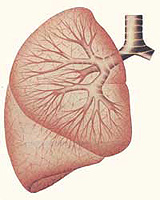 The disease flows cyclically, with periodic exacerbations of acute fever, an increase in the number of typical three-layer sputum. The duration of the stages depends on how preserved the functions of the drainage bronchi and emptying the abscess cavity.
The disease flows cyclically, with periodic exacerbations of acute fever, an increase in the number of typical three-layer sputum. The duration of the stages depends on how preserved the functions of the drainage bronchi and emptying the abscess cavity.
With a long flow, complications are possible: cachexia, bronchiectase (expansion of bronchi due to inflammation), pneumosclerosis (the growth of scar connective tissue), lung emphysema (increased airiness of pulmonary fabric), pulmonary bleeding, respiratory failure, amyloidosis (selection of amyloid protein) internal organs, Abscess brain and others.
Severe two main types of chronic abscess.
First type. Acute stage ends with a clinical recovery of a patient or significant improvement. The patient is discharged from the hospital with normal body temperature. After discharge, the condition remains satisfactory, and the patient often starts work. However, after some 'period, the body temperature rises again, cough is enhanced. After 7-12 days, an emptying of an umane occurs, the body temperature decreases. Subsequently, exacerbation becomes longer and frequent. The phenomenon of purulent bronchitis are developing, intoxication and the associated dystrophic changes in organs are growing.
Second Type. A sharp period without pronounced remission goes into a chronic stage. The disease occurs with hectic temperature. Patients highlight a large amount of purulent sputum dividing when standing on three layers. Heavy form of intoxication is growing rapidly and increases, leading to general depletion and dystrophy of parenchymal organs. More often, this type of disease takes place with multiple lung abscesses. In patients with a characteristic view: they are pale, the skin of the earthly shade, the mucous membranes are cyanotic, there is an endlessness of the face, there are swelling in the footsteps and lower backs associated with protein fasting and impaired kidney function. Rapidly increasing pulmonary failure, from which patients die.
In chronic abscess it is possible to develop the same complications that are inherent in the acute period of the disease.

